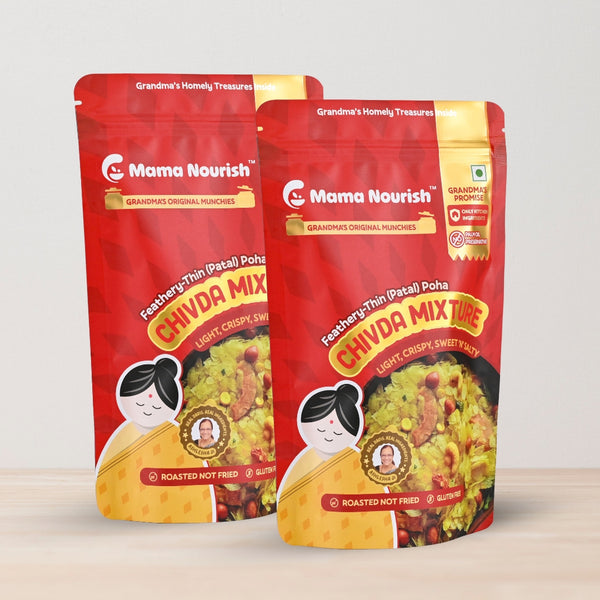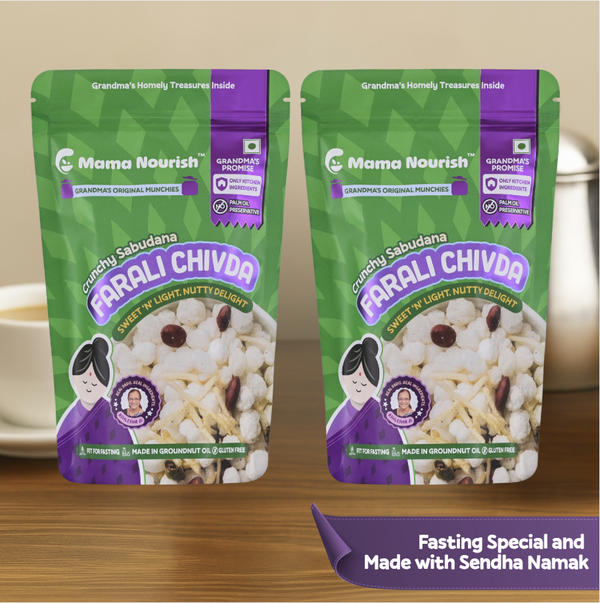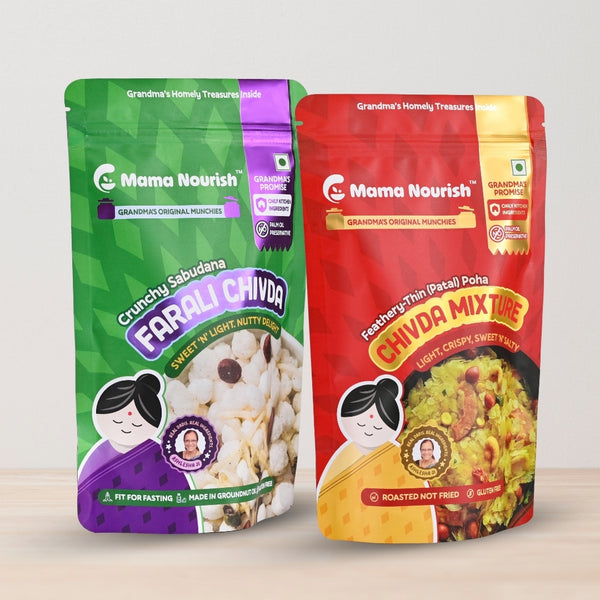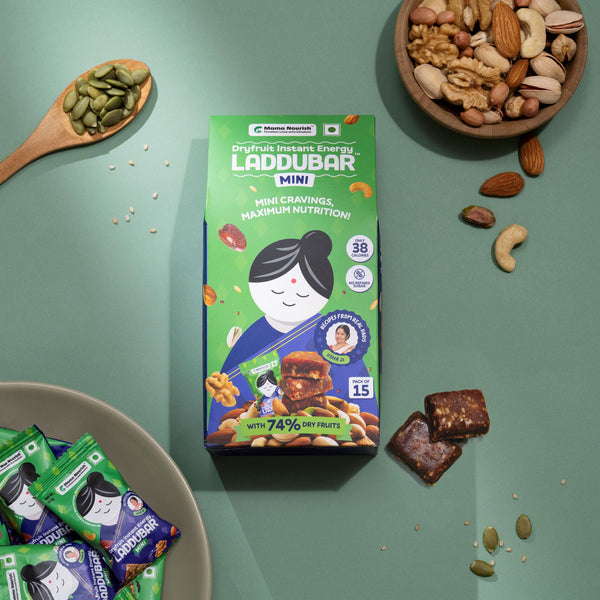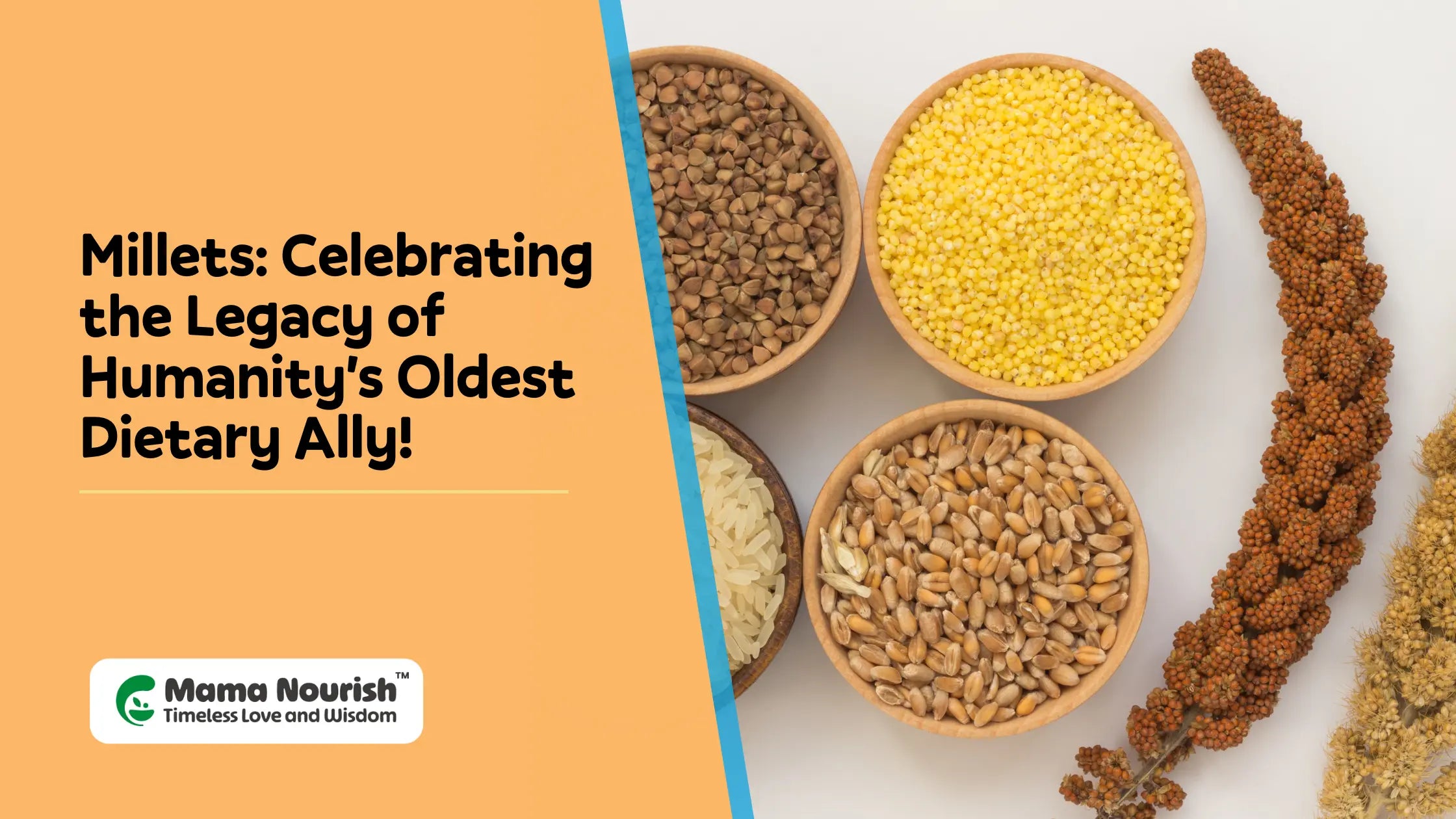
Millets: Celebrating the Legacy of Humanity's Oldest Dietary Ally!
As Granny tried to feed Rahul ragi porridge, he frowned slightly. With curious, starry eyes, he asked, "What is it, Dadimma?" Granny smiled and replied, "Betta, it's superhero food."
Observing her grandson's puzzled expression, she asked, "Do you want to hear a story?"Baby Rahul's eyes brightened with excitement.
Grandma began the tale, "Years ago, after defeating the demon king, Lord Rama returned to Ayodhya and became king, then Hanuman expressed a desire to leave Ayodhya. Lord Rama agreed, allowing him to take whatever he liked from Ayodhya."
Rahul, wide-eyed, asked, "Then?"
Granny continued, "Hanuman chose ragi but didn't take rice, making rice upset."
Curious, Rahul inquired, "then?"
Granny continued the story, "Then, rice got really upset, so Lord Ram asked Lord Indra to solve the issue."
Rahul responded with an "Oh…."
Granny continued, "But Indra got delayed. When he returned after a few months, he compared ragi and rice and said that ragi was better."
Rahul asked, "Why?"
Granny explained, "Because ragi looked fresh and strong, while rice had already rotted. See, If you eat ragi, you will become stronger like ragi."
Rahul happily nodded and ate all the porridge.
 Ragi/Finger Millet
Ragi/Finger Millet
These blessed grains- ragi, also known as ramadhanya, are part of a group of grains called millets. These cereals have been integral to our culture since ancient times, with their history dating back to the Indus Valley civilisation.
In today's health-conscious era, there's a renewed interest in reviving these forgotten grains. But why? What exactly are millets? Why is it called sustainable crops? And what are some myths that need debunking about these ancient grains? Let's find out.
What are Millets/Shree Anna?

Millets are a group of small-seeded grains cultivated for thousands of years and are an essential part of our traditional diets. They are highly nutritious and hence rightly called nutri cereals. Common types of millet include Pearl Millet (Bajra), Finger Millet (Ragi), Foxtail Millet, Proso Millet, Little Millet, Barnyard Millet, Kodo Millet, and Sorghum (Jowar).
Despite being nutritionally rich, millets face numerous misconceptions.
Let's dispel these myths and delve into the facts that highlight the nutritional value of millet.
Millet Myths Vs Facts
Myth 1 - Millets are Tasteless and Difficult to Cook
Fact: It is generally perceived that cooking millet is difficult. Contrary to the common belief that cooking millet is challenging, it's actually quite simple. Soaking before cooking and following the appropriate water-to-millet ratio and cooking time can make it easy to cook.
In fact, it's not just easy to cook. But you can make numerous delicious recipes with millets like Ragi Mudde, Bajra Roti, Foxtail Millet Upma, Little Millet Khichdi, Kodo Millet Pulao, Sorghum (Jowar) Bhakri, Barnyard Millet Pongal, Millet Idli/Dosa and millet laddu etc.

Bajra Atta Ladoo/ Kuler Ladoo
Check out these delicious millet recipes for healthy eats- millet recipe book published by FSSAI, part of the government's eat right campaign- EatRightIndiabooks.
Myth 2: Only Suitable for Individuals with Specific Dietary Constraints
Fact: Some believe millets are only for people with specific diets, but the truth is that millets are healthy and a suitable staple for everyone, from babies to the elderly.
Myth 3: Digestion of Millets is Difficult
Fact: Millets are easy on digestion, being non-glutinous and not acid-forming, making them a friendly choice for a wholesome diet.
A Review study on the Nutritional and Health Benefits of Millets, published in ResearchGate, notes that the fibre in millets aids digestion, preventing constipation. Millets promote the growth of beneficial gut bacteria, contributing to overall gut health with their prebiotic effects.

Pearl millet
Myth 4: Not Good for Those with Thyroid Conditions
Fact: People with thyroid issues can safely include millets like ragi (Nachni), amaranth, and little millets (Kutki) in their diet, but should moderate pearl millet (Bajra) and sorghum (Jowar) due to a compound they may contain, called goitrogens.
Goitrogens have the potential to interfere with thyroid function by affecting the uptake of iodine, but that too can be reduced greatly just by using the typical known cooking methods of millet, like soaking and cooking.
So do not worry excessively about your thyroid condition, as the benefits largely outweigh the demerits.
Myth 5: Seen as a Diet for the Poor
Fact- from price to nutrition it beats other staples like rice and wheat. The millets are rich in nutrients and packed with numerous health benefits, making it an ideal choice for any health-conscious person.
Most importantly, millet is a sustainable crop as well.
Here is a list of health benefits offered by millets.
Health Benefits
Heart Health
Millets are known to reduce cardiovascular diseases. Consuming millet-based foods like burfi, porridge, buns, roti, and upma daily has been shown to lower total cholesterol levels.

Ragi roti
Nutrient-Packed
These millets not only provide energy but are also rich in micronutrients such as vitamins A, B, D, and E, niacin, pyridoxine, antioxidants, zinc, magnesium, potassium, manganese, calcium and iron. Millets have higher protein content (10–12.3 g/100 g), modest fat (1% to 5%), and an impressive amount of iron (0.5–19.0 mg) and calcium (10–410 mg) compared to rice and wheat.

In fact, Ragi contains more calcium than any other cereal; it is as high as 344 mg/100 gm.

On the other hand, pearl millet contains about 11 mg of iron per 100 grams, whereas wheat typically contains around 2-4 mg of iron per 100 grams. i.e. Pearl millet has approximately two to four times more iron than wheat.
Antidiabetic
Millet releases less glucose into the bloodstream over an extended period, contributing to diabetes prevention.
Millets also assist in managing body weight, which is crucial for diabetic patients. The millets have a lower glycemic index compared to commonly eaten cereals like rice. The glycemic index refers to the rate at which a food item can affect your blood sugar level.
That is, a lower glycemic index indicates that the consumption of a particular food causes a lesser spike in blood glucose levels.
Gluten-Free
Gluten refers to a particular type of protein found in wheat, barley, rye, and some cultivars of oats. Gluten can cause many health disorders, including celiac disease, non-celiac gluten sensitivity, wheat allergy, gluten ataxia, and dermatitis herpetiformis.
The millets like ragi are gluten-free, hence a safer staple to avoid gluten-related disorders.

Ragi puttu
Antioxidant Protection
Millets boast an abundance of antioxidants like phenolic compounds and flavonoids, effectively combating free radicals, thus shielding against oxidative stress and lowering the likelihood of chronic ailments.
Millets contain phytic acid, tannins, and phenols, which contribute to antioxidant activity and play an important role in maintaining overall health.
Weight Management

Millet Porridge
The pearl millet, with its high fibre content, may help slow down the movement of food from the stomach to the intestines, leading to longer food interval durations, which allows the prevention of obesity. Similarly, the consumption of fox tail millet is also known to aid in weight management.

The dietary fibre is crucial for gut health and preventing diseases like heart disease, colon cancer and diabetes. The millets contain around 7-37.8 % of dietary fibre. The pearl millet boasts around 11 % dietary fibre, which improves fibre bowel movement.
Along with these health benefits, what sets millet apart from other grains is its sustainable nature.
What makes it a sustainable, resilient crop amidst rising concerns about climate change? Let's find out.
Millet: An Ideal Choice Amidst Climate Change Woes

Millet field
Millets are capable of thriving in a wide range of environmental conditions. From low to high altitudes, including arid lands, they demonstrate adaptability and resilience. Millets require less water than traditional staples like rice and wheat; hence can thrive under non-irrigated conditions and in areas with minimal rainfall.
They are highly tolerant to heat, even up to 64 degrees Celsius, and other extreme weather events like drought and floods, making them an ideal choice amidst varying environmental threats like climate change and global warming.
Besides, its carbon footprint is zero. Carbon footprint refers to the total amount of greenhouse gasses, including carbon dioxide and methane, emitted by any activity and it is relevant since these gasses are responsible for global warming.
They do not require synthetic fertilisers and pesticides, making agriculture more sustainable and healthy.
A Smart Food: For Healthy People and Better Planet

Millet Food thali or platter, an Indian vegetarian age-old way of eating
To sum it up, millets, with all these health benefits and environment friendliness, are a smart choice for healthy people and the planet.
Millets in India: A Brief Timeline
- 3000-2000 BC
- Domestication of proso millet/chena and foxtail millet/Kangni
- 2500-2000 BC
- Domestication of little millet/Moraiyo/ Kutki and browntop millet/bhoora sheersh baajara
- 1800-1200 BC
- Kodo millet/Kodo dhana in Northern and Eastern India.
- 1200 BC
- Mentions of foxtail millet/phoksatel baajara, barnyard millet/ sanwa, and black finger millet in Yajurveda texts suggest millet cultivation in India.
- 600-500 BC
- Sushruta classifies cereals, including millets like Kodo millet, barnyard millet, and Coix.
- 300-200 BC
- Arthashastra of the Mauryan age refers to kodo millet as kodrava.
- 4th-5th century AD
- Kalidasa mentions foxtail millet in 'Abhijnana Shakuntalam Symbolizing its auspicious nature.
- 16th-17th century AD
- The Ain-i-Akbari records millet classification during the Mughal period.
- 18th-20th century
- The colonial period shows decreased emphasis on millets.
- 2023
- The United Nations, at the behest of the Government of India, declared 2023 the International Year Millets.
Share
Struggling with picky eaters? Millets superfood can come to your rescue! Kiddikind’s millet-based recipes are not only nutritious but also irresistibly delicious. Discover how these super grains can improve digestion, boost immunity, and provide sustained energy for your children.
This post is extremely radiant. I really like this post. It is outstanding among other posts that I’ve read in quite a while. Much obliged for this being better than the average post. I truly value it! millets during pregnancy

